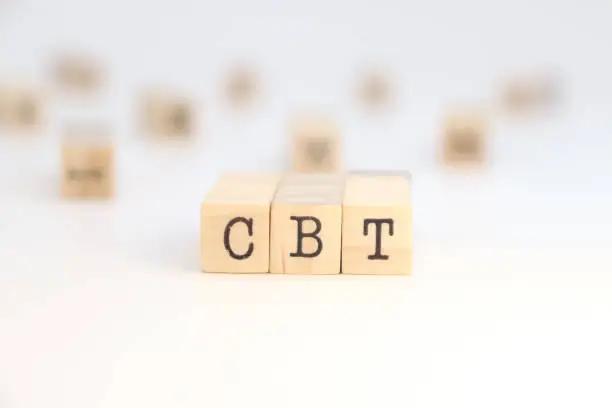If you’ve ever felt stuck in a loop of worry, fear, or panic, you’re not alone. Millions of people around the world live with anxiety every day — and many are finding relief through a proven approach called CBT, or Cognitive Behavioral Therapy. 💡
But what exactly is CBT? How does it help with anxiety? And why is it still one of the most trusted forms of therapy in 2025?
Let’s dive into a friendly, research-backed guide that breaks it all down — in a way that’s relatable, engaging, and empowering. 🧘♀️✨
💡 What Exactly Is CBT?
CBT (Cognitive Behavioral Therapy) is a short-term, goal-oriented form of psychotherapy that helps you understand how your thoughts, feelings, and behaviors are connected — and how changing one can transform the others. 🧠💭
In simple terms:
🧠 “What we think affects how we feel and what we do.”
CBT helps people identify negative thinking patterns, challenge them with logic, and replace them with healthier, more balanced thoughts. The result? Less anxiety, more control, and better emotional regulation.
😰 Why Anxiety Happens — And How CBT Targets It
Anxiety isn’t “just in your head.” It’s a natural survival response that goes into overdrive when your brain thinks you’re in danger — even when you’re not. This triggers:
- Racing thoughts
- Rapid heartbeat
- Sweating or trembling
- Avoidance behaviors
CBT teaches you to recognize this false alarm, retrain your brain, and take back control. 🧘♂️💪
🔎 Common Thought Patterns CBT Helps With
People with anxiety often fall into cognitive traps, such as:
| 🧠 Cognitive Distortion | 🚫 What It Sounds Like | ✅ CBT Helps You Say |
|---|---|---|
| Catastrophizing | “If I mess up, everything will fall apart.” | “Even if I mess up, I can handle it.” |
| Mind Reading | “They must think I’m stupid.” | “I don’t know what they’re thinking, and that’s okay.” |
| Black-and-White Thinking | “Either I’m perfect or I’ve failed.” | “Progress, not perfection, matters.” |
| Overgeneralizing | “This always happens to me.” | “This situation is different. Let’s focus on the facts.” |
🔁 CBT helps you break this cycle and develop healthier mental habits.
🧰 Key CBT Tools Used for Anxiety
CBT uses a step-by-step, hands-on approach to rewire thought patterns and behaviors. These are a few techniques you’ll explore in CBT sessions:
📓 1. Thought Records
Write down anxious thoughts, rate their intensity, challenge them with logic, and replace them with realistic alternatives.
🧪 2. Behavioral Experiments
Test your fears in real life (gently!). For example:
Fear: “If I speak up in class, everyone will laugh.”
CBT: Try it → Realize it’s usually fine.
🔄 3. Cognitive Restructuring
Practice identifying distorted thinking and learning how to reframe it over time.
🧘♀️ 4. Relaxation & Mindfulness
CBT integrates breathing, visualization, and grounding techniques to manage physical symptoms of anxiety.
⏳ 5. Graded Exposure
Face fears in small, manageable steps until your anxiety response weakens.
✅ Example: Start by thinking about your fear → then looking at a picture → then gradually facing the situation in real life.
🔬 CBT in 2025: Why It’s Still the Gold Standard
CBT continues to evolve with digital tools, but the core method remains highly effective. New research shows:
- 📊 2024 Meta-analysis: CBT reduced anxiety symptoms by 60–75% across age groups.
- 🧪 Neuroimaging: CBT changes brain activation patterns linked to fear and worry.
- 📱 2025 Trend: CBT apps now use AI to track mood and offer real-time reframing exercises.
The American Psychological Association and WHO both recommend CBT as the first-line treatment for anxiety — often more effective than medication in the long term. 💊✨
📱 CBT Therapy Formats in 2025
Good news! CBT is more accessible than ever:
| 🛠️ Format | 🌍 Details |
|---|---|
| In-Person Therapy | Great for deep connection with a trained psychologist |
| Online CBT | Video sessions from home — just as effective! |
| Self-Guided CBT Apps | Affordable and flexible (check: Woebot, MindDoc, Sanvello) |
| Group CBT | Share and learn with others in similar situations |
| Hybrid Programs | A mix of live support + app-based tracking |
🧍 Is CBT Right for You or Your Child?
CBT works for all ages — including children, teens, and adults — and helps treat:
✅ Generalized Anxiety
✅ Panic Disorder
✅ Social Anxiety
✅ OCD
✅ PTSD
✅ Health Anxiety
✅ Test or Performance Anxiety
Bonus: CBT doesn’t just help with anxiety — it also improves sleep, confidence, focus, and decision-making. 🌙💼🗣️
✍️ What a Typical CBT Session Looks Like
Here’s what you can expect from CBT therapy:
- 🧠 Identify the anxiety trigger (e.g., presentations, crowds, decisions)
- 📝 Explore your automatic thoughts
- 🔍 Look for thinking errors and beliefs
- ✅ Reframe your thought using logic and evidence
- 🎯 Practice calming behaviors and skills
- 📆 Homework: Apply it to real life during the week
Each session builds on the last, helping you gain insight and real-life results.
💬 Real People, Real Results
“CBT helped me see that my anxiety wasn’t the truth — it was just a pattern. Now, I have tools that help me breathe through the storm.”
— Anita, 31, Lagos 🇳🇬
“At first I thought therapy was only for ‘serious problems.’ But CBT gave me the tools to finally stop the constant overthinking.”
— James, 26, London 🇬🇧
✅ Getting Started with CBT for Anxiety
Ready to give CBT a try?
🎯 Here’s your starter checklist:
- 🖥️ Search for “CBT therapists near me” or use platforms like BetterHelp, Talkspace, or Calmerry
- 📲 Download a CBT-based anxiety app
- 📘 Keep a worry or thought journal
- 🧘 Practice deep breathing and grounding exercises
- 💬 Join a local or online support group
🌟 Final Words: Take Charge of Your Anxiety
CBT isn’t about “thinking happy thoughts.” It’s about changing the way your brain responds to fear — with science, strategy, and self-compassion. 💗
By challenging your anxious thoughts and building healthier habits, you can break the cycle of worry, panic, and avoidance.
You are not your anxiety. And with CBT, you can finally breathe free. 🌿✨






